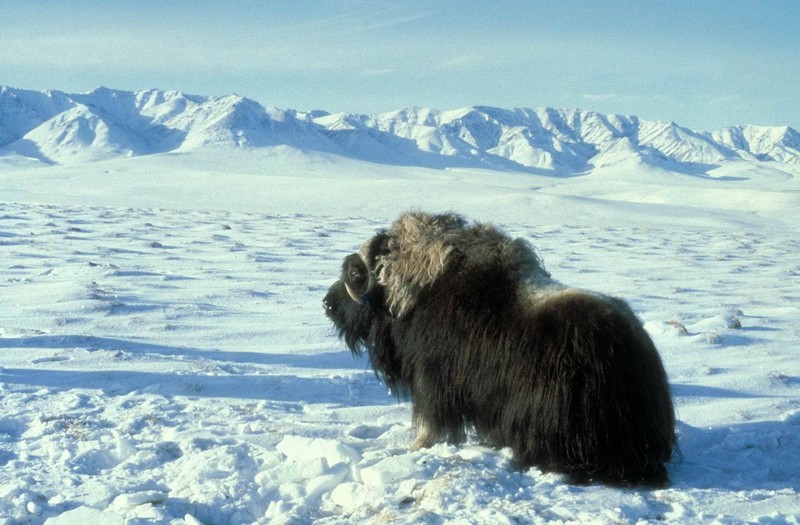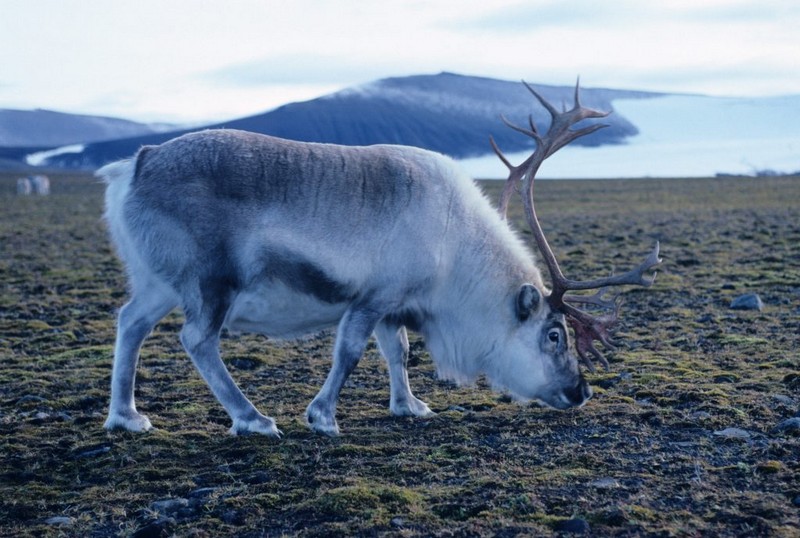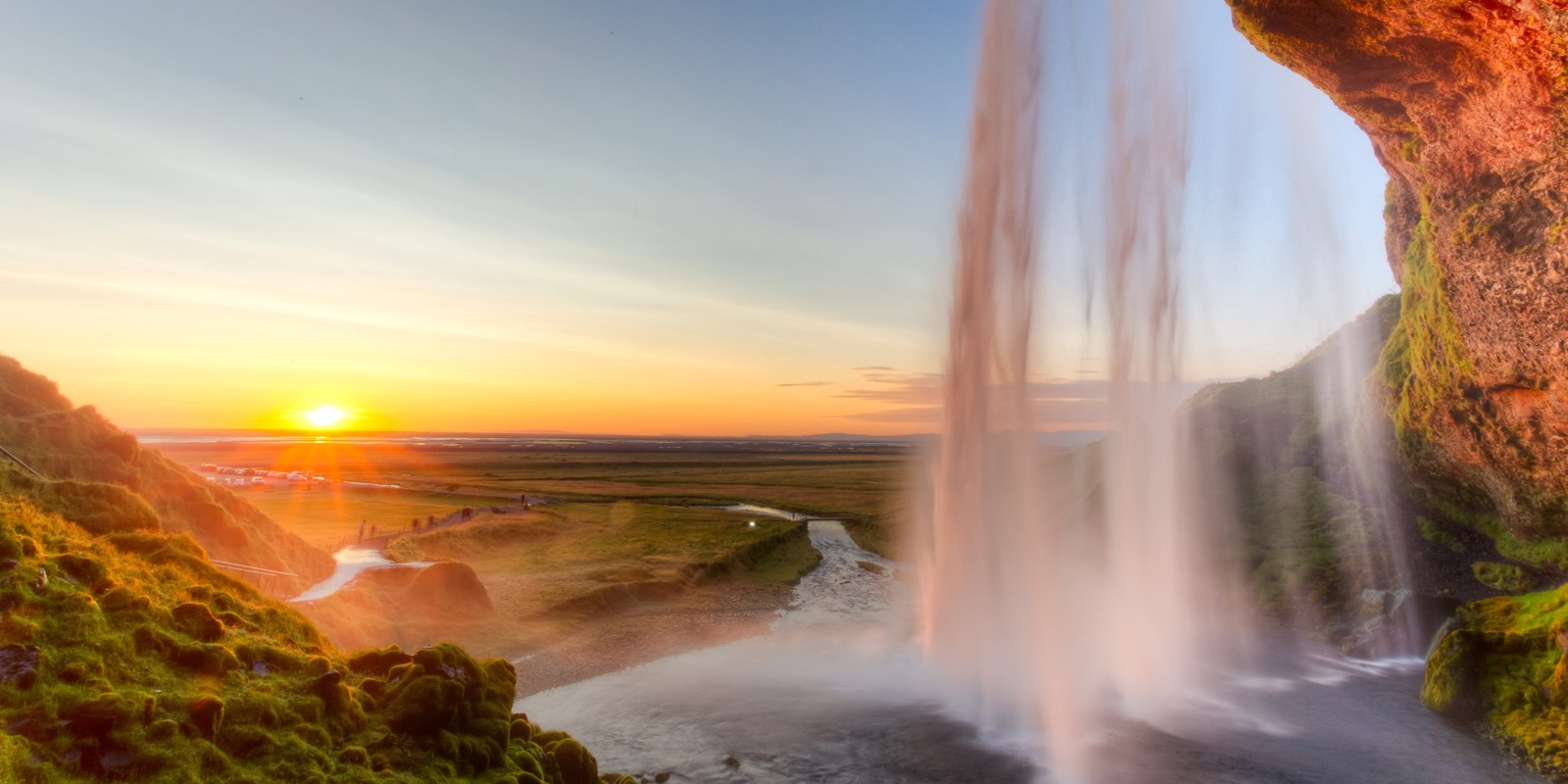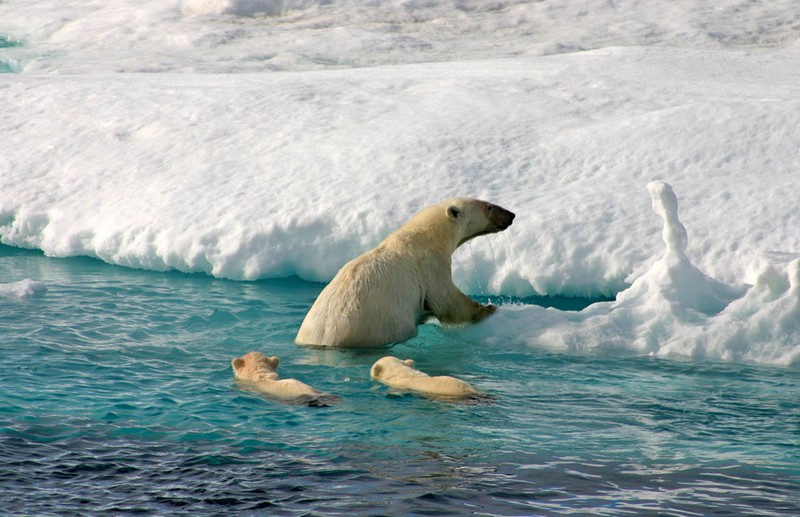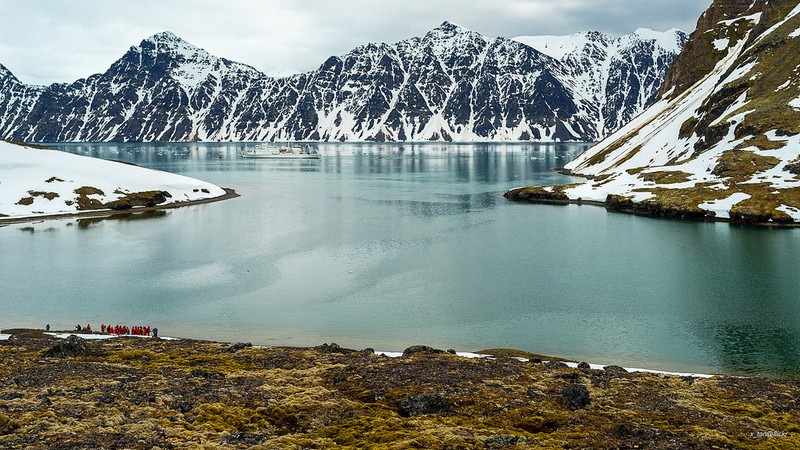North Atlantic Expedition: A True Arctic Adventure
Arrive in the vibrant Icelandic capital Reykjavík, and embark Ocean Albatros for an expedition voyage like no other. This unique voyage plans to visit three of the Arctic's most spectacular islands, on an odyssey through the North Atlantic to the high Arctic. Departing from the subpolar metropolis of Reykjavík, we will venture towards the tiny traditional village of Siglufjörður, and land on Grímsey, Iceland's northernmost island, straddling the Arctic Circle.
From Iceland we venture into the unknown, heading for the enigmatic isle of Jan Mayen, Earth's northernmost volcano and one of the most isolated and spectacular islands anywhere in the world. This island is home to vast numbers of seabirds, and is an excellent place to spot whales, which like us, are migrating northwards. From Jan Mayen, we will set a course for Svalbard, following the migrating birds which come to nest on this isolated high Arctic archipelago. This far north, the sun never sets, and life moves at a frenetic rhythm as wildlife feed and raise their young on summer's brief bounty. Seabirds, seals, walrus and reindeer are just some of the wildlife we hope to find in this high Arctic paradise - maybe even a glimpse of the polar bear, King of the Arctic. With five days to explore this breathtaking Arctic archipelago, we will have ample time to experience the fascinating history of Svalbard, witness jaw-dropping mountains, fjords and glaciers, and get up close and personal with polar nature.
There are few wilder, more magnificent and untouched places than the Arctic islands of the North Atlantic! And few ships better suited than Ocean Albatros for such a voyage. Experience with us!
Tour Itinerary
The rock-like columns of Hallgrímskirkja Church loom over the city of Reykjavik, a hip Scandinavian capital which needs little introduction. With new Nordic cuisine, excellent shopping, fantastic excursions and an easy relaxed vibe, Reykjavik is one of Scandinavia's most welcoming and exciting cities. Explore the city's world class (and often very quirky) museums, shop for snuggly local sweaters, or simply watch this bustling city in action on a cozy cafe terrace.
MV Ocean Albatros awaits embarkation in the city's bustling harbour, with comfortable staterooms ready to welcome our guests. After our mandatory safety briefings and lifeboat drill, Ocean Albatros will sail out of Reykjavík and chart a course for the majesty of the Snæfellsnes Pensinsula.
From Iceland's bustling capital, we will sail around the northwestern tip of this rugged island, en route to the town of Siglufjörður.
The waters around Iceland are some of the richest on planet Earth; here, the warm currents of the Gulf Stream meet the cold East Greenland current, producing waters rich in oxygen and nutrients. Plankton bloom in these productive waters, and they in turn nourish a plethora of species. As we round the Westfjords (the rugged peninsula forming Iceland's northwest corner), join your expedition team on deck to watch for the endemic wildlife of this unique seascape. Puffins bob along the waves, diving into the chilly depths in search of food, while fulmars and other seabirds glide along the side of the vessel. If we are lucky, we may witness the whales which come to feast on the vast shoals of herring in the area. Your experienced onboard guides will regale our guests with tales of Iceland's rich foklore, culture and unique marine ecosystems.
A day at sea is the ideal time to familiarise yourself with your expedition vessel; relax in the Observation Lounge with a coffee and a pair of binoculars, take in an expertly crafted lecture to learn more about the region, or enjoy a specially made cocktail with new friends as we approach Siglufjörður.
In the morning, Ocean Albatros will arrive in the small town of Siglufjörður, the northernmost town on the Icelandic mainland. Like almost every town in Iceland, the harbour is the heart of the town, which boomed from a tiny hamlet to a true town in the 1940s and 50s during the herring boom. This little fish has been the mainstay of the town's economy since time immemorial, and made Siglufjörður one of Iceland's largest towns in the 1950s.
Siglufjörður is a town that has fully embraced its history and identity - everywhere in town, the herring reigns supreme! The Herring Era Museum, a series of period buildings shows the traditional processing of these fish, which continues to this day. The town occupies one of the most stunning fjords (bearing the same name) in Iceland; up to 18 species of birds can be found in the area, making it a hugely popular spot for visitors driving the ring road of Iceland.
Over lunch, we will re-embark Ocean Albatros and reposition from Siglufjörður to Grimsey, a small island off Iceland's northern coast. This tiny emerald island is the only part of Iceland which crosses the Arctic Circle - indeed, it runs directly through the northern half of the island. The spot is marked by a massive concrete sphere "Orbus et Globus", a sculpture which is moved annually to account for tiny changes in Earth's orbit (and therefore in the position of the Arctic Circle). The island is home to only around 70 hardy locals, but also to thousands of seabirds. Watch out for curious puffins peeking out of their burrows, and beware the territorial Arctic terns overhead! The island holds a huge tern population, and workers often have to clear the runway of these elegant yet feisty little birds to allow planes to land.
Grimsey marks our official passage into the Arctic; from here, we are sailing into the unknown as we head next for the enigmatic island of Jan Mayen.
Leaving Iceland behind, Ocean Albatros will spend a day at sea en rotue to Jan Mayen, an isolated volcanic island roughly equidistant between Greenland, Svalbard and Iceland. Here, warmer water from the Atlantic meets the cold waters of East Greenland, often producing murky foggy conditions. However, the mixing of waters produces nutritious waters which nourish the wildlife of the area - from the vast shoals of herring so important to towns like Siglufjörður, to the whales which grow more common as we approach the shores of Jan Mayen.
Days at sea are never dull. We will arrange a variety of activities onboard for our guests to enjoy to engage the mind, body and soul. Join your knowledgeable Expedition Team lecturers in the Theatre to hear specially-crafted lectures on local history, wildlife, geology, culture and more, unwind with a massage in the Albatros Polar Spa, or simply watch the seabirds gliding along the ship from our hot tubs as the Ocean Albatros flies across the Davis Strait.
The active volcanic island of Jan Mayen lies approximately equidistant between Svalbard, Greenland and Iceland. If not exactly in the middle of the Greenland Sea, it is located precisely on the Mid Atlantic Ridge, the reason for its volcanic existence. This enigmatic and isolated island is the only active volcano in Norway, and the northernmost active volcano in the world - although the almost perpetual clouds and fog hovering over the summit can make it hard to spot! The volcanic peak of Mt. Beerenberg reaches 2,277m altitude - making it one of Norway's 300 summits exceeding 2000m.
The island is inhabited by only 18 persons, a mixture of scientists running the meteorological station and Norwegian Military personnel. Subject to strong winds and large well, landing on this incredibly remote island can be challenging; we will try to go ashore at the narrowest part of the island, from either south or north, depending on the prevailing wind and surf. The volcanic origin is visible all over with cinder cones, lava flows and the Mount Fuji-like appearance of Beerenberg looming above, while creeping tundra plants and squabbling seabirds eek out a living in the extreme environment of the island.
From Jan Mayen, we set a northeasterly course, aiming for the high Arctic islands of Svalbard. Situated approximately 800km north of the Norwegian mainland, Svalbard is extremely remote and isolated; Longyearbyen, the islands' "capital" lies only 1200km from the North Pole, 800km closer than Oslo.
Sailing to Svalbard requires a ship capable of handling any ice or rough weather which may be encountered in these northerly seas. To the west of Jan Mayen lies the West Ice, a vast expanse of floating sea ice which hugs the coast of East Greenland, occasionally drifting across the Greenland Sea to Svalbard even in summer. Luckily, Ocean Albatros boasts Polar Code 6 and Ice Class 1A ratings, making her ideal for all but the thickest Arctic ice. The unique X-Bow design of the hull also offers enhanced stability in rough seas.
Keep your binoculars close at hand as we appraoch Svalbard. These islands are a haven for wildlife; as we migrate northwards, so do the whales, seals and birds which live on and around this magnificent archipelago during the summer. As we approach Svalbard, we can expect the concentration of wildlife to increase. As we approach the continental shelf offshore of Svalbard during our second afternoon at sea, keep watch for the whales which come to feed on the abundant plankton which rises to the surface. Once hunted to near-extinction for their oily blubber, these gentle ocean giants are now staging a comeback and are common around Svalbard in summer - a true conservation success story!
We will arrive on the afternoon of the seventh day of our voyage on the forbidding shores of southern Svalbard. Roughly triangular, the southern half of Svalbard comprises countless fjords, islets and skerries, all of which beckon exploration.
At a first glance, this region may seem barren and lifeless. But look closer and the exact opposite it true - saxifrages, Svalbard poppies and other tundra plants defy the brutal weather, their jewel-like flowers reaching for the weak Arctic sunlight. Tiny calico snow buntings flit between crags, while perfectly camouflaged purple sandpipers scamper along the shore. Look higher up on the vegetated slopes, and there - greyish white 'boulders' move and resolve themselves into sheep-sized reindeer: the unique subspecies native to Svalbard. A flash of bluish-black, and the screeches of nearby birds herald the arrival of the Arctic fox, the only native land predator on Svalbard (the polar bear being classified as a marine mammal).
During the ‘night’ (what is night, when the sun never sets?), Ocean Albatros will have repositioned past the saw-toothed mountains of Prins Karls Forland and arrived in magnificent Kongsfjord. Surrounded by craggy mountains, bounded by the magnificent Kongsbreen and Kongvegen Glaciers, and crowned by the Three Crowns (a set of pyramidal mountains said to represent the monarchies of Norway, Sweden and Denmark), this is surely one of the most beautiful and tranquil corners anywhere in the world.
Our first landing will be at the small settlement of Ny Ålesund. Situated further north than Longyearbyen, Ny-Ålesund is Earth's northernmost settlement, if a group of scientific stations, a post office and a single shop open for a few hours can be described as such... You will have to judge for yourself!
These islands' geographical location has made them the staging post for exploratory and scientific expeditions for centuries - a proud legacy which continues to this day. The setting is spectacular, and the scientific projects are as fascinating as the history of the town, which has hosted the Nobile, the Norge and the Fram, Amundsen, Nansen and Nordenskiöld, all legends of polar exploration who passed this lonely outpost seeking to push the boundaries of humanity. The remnants of these expeditions (such as the mooring mast of the Norge) can still be seen today.
One of the largest protected wilderness areas in Europe, North West Svalbard was declared a national park in 1973. The area is famed for its history, which documents some of the earliest human arrivals on Svalbard. While Norse explorers may have sighted these icy shores during the Viking Age, the first definite arrival was the expedition of William Barents, the legendary Dutch explorer for whom the Barents Sea is named. While now protected from human distruption, when Barents arrived in 1596, he noted the vast numbers of whales and seals which were soon prey to English and Dutch whalers, who arrived within a decade of Barents to pillage the area's wildlife. The area occupied the triple point between land, sea and ice, and as such was the perfect location from which to harvest the gentle giants of the oceans.
Sites used to dismember whale carcasses and render them for their precious oil include the Dutch settlement of Smeerenburg, where the remains of 16th Century blubber ovens and building foundations can still be seen. Other sites such as nearby Ytre Norskøya record the darker side of this industrialised slaughter, where hundreds of young men who hoped to make their fortunes are buried thousands of miles from home.
Today, all that remains from this period of history are bones and the scant remnants of human habitation. Slowly reclaimed by creeping Arctic nature, the region is now a anture lovers paradise. Tiny Arctic poppies and purple saxifrage defy the brutal conditions to flower in the brief summer, while geese, eider ducks and other seabirds return to the island to raise their young. Walrus can be found hauled out on beaches, and we must always be on careful lookout for wandering polar bears in this now again wild region. Our experienced Expedition Team will be on contstant lookout for wildlife (including polar bears) throughout the voyage, and we will always inform guests if we spot something exciting!
As we retreat from our voyage's northernmost point, we will set a course for central Spitzbergen. Measuring around 400km in length from north to south, Spitzbergen is the largest island of Svalbard, the archipelago it is synonymous with. The entire island of Spitzbergen experiences a polar tundra climate, with short, cool summers and long, dark, brutally cold winters. Nonetheless, life clings on here, and Svalbard's extraordinary wildlife can be found throughout Spitzbergen.
On our final full day in Svalbard, we will head to wherever offers us the best opportunities for landing, exploration and wildlife experiences, guided by our experienced Expedition Leader and Captain - such is the essence of an Arctic expedition! Perhaps we will find a particularly spectacular glacier, and launch our fleet of Zodiacs to explore the hinterland where ice meets land meets sea. Maybe we will notice a colony of seabirds, or a herd of reindeer, and come ashore to observe them. Or maybe we will be lucky enough to spot a polar bear, king of the Arctic as we cruise along the coastline towards our final destination of Longyearbyen, 'capital' of Svalbard.
During the evening, the Ocean Albatros will reposition to return to the port of Longyearbyen. Even this small town will feel like a metropolis after days of isolation in the wilderness of the Arctic!
Longyearbyen contains the world's northernmost... well, nearly everything! This remarkable little city is not only the northernmost town in the world (if one excludes the tiny research community of Ny-Ålesund, slightly further north on Svalbard), but also hosts the world's northernmost civilian airport, schools, bank and supermarket. The town's rugged frontier edge belies a core of warm Nordic hospitality and coziness - 'koseligt' as the Norwegians say!
After bidding a fond farewell to the crew and Expedition Team of Ocean Albatros, enjoy some time at leisure to explore Longyearbyen before heading to Svalbard Airport to join your flight back to Oslo- with memories to last a lifetime.
Customer reviews






